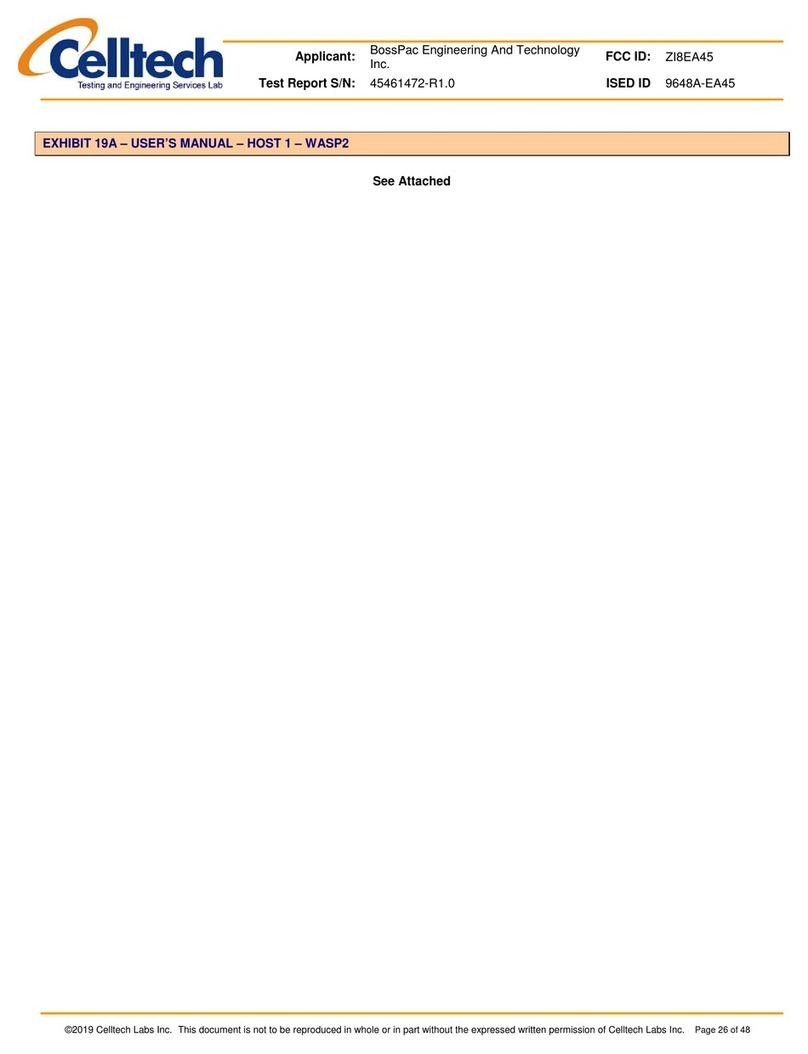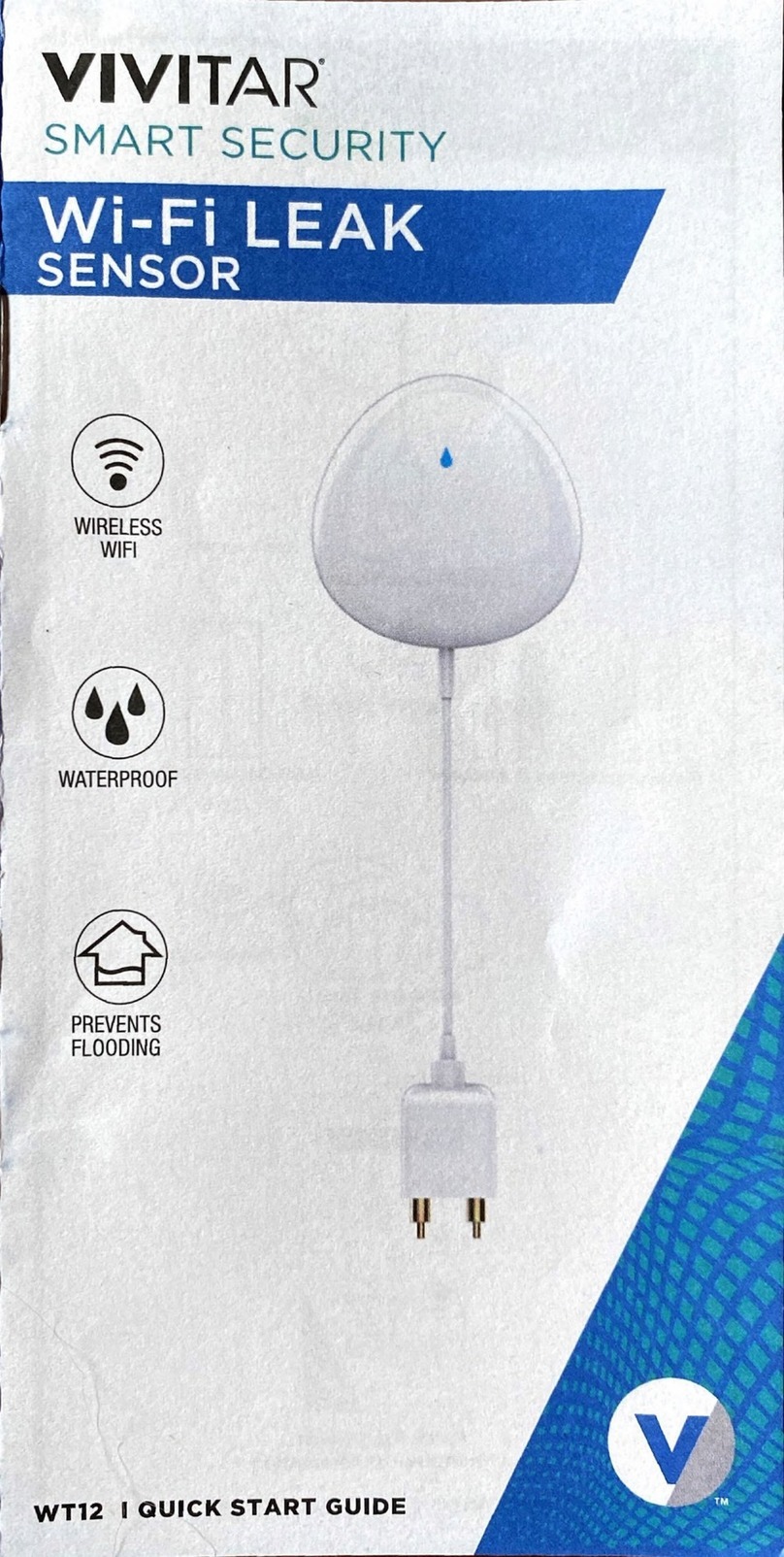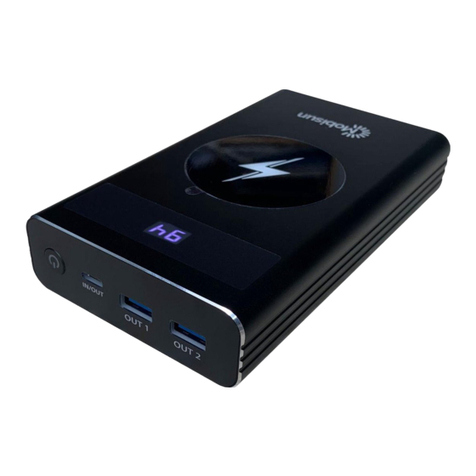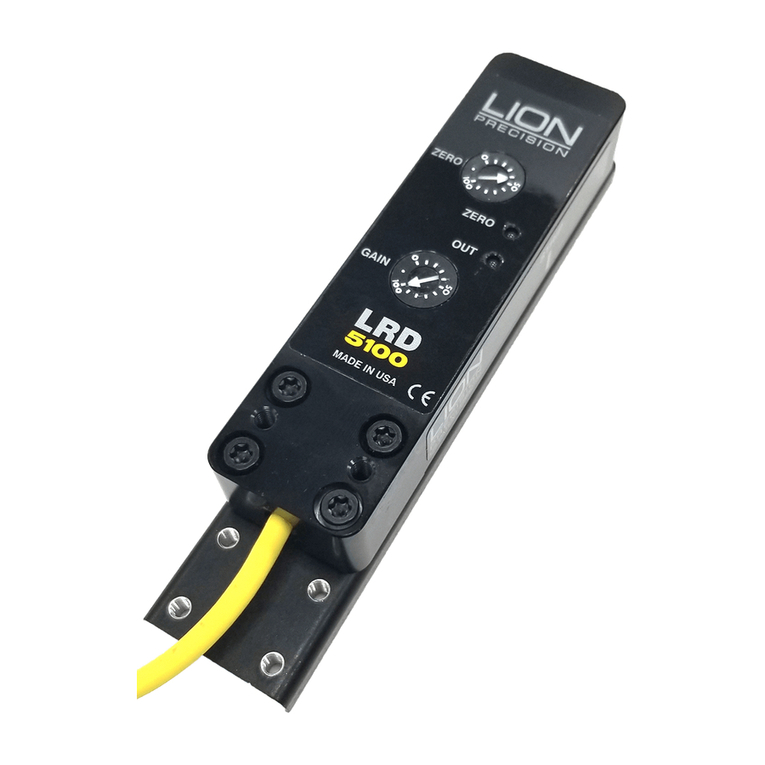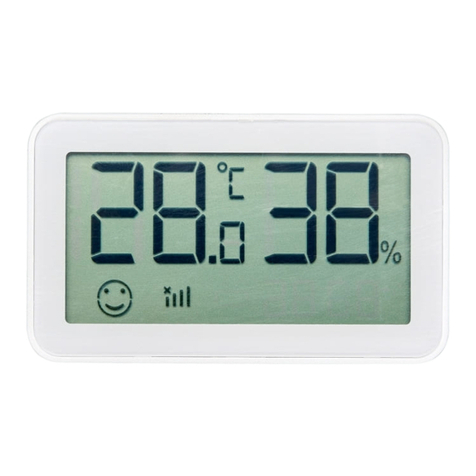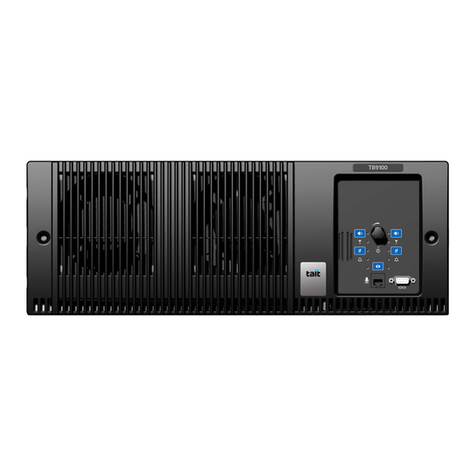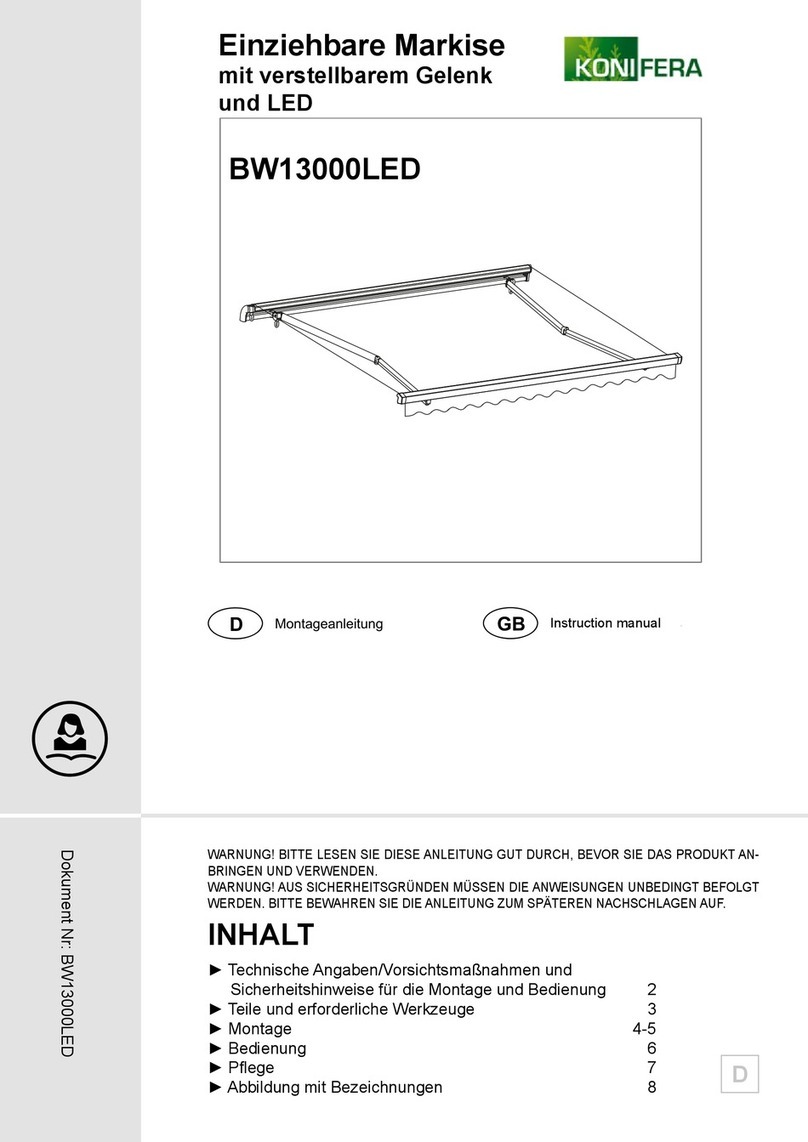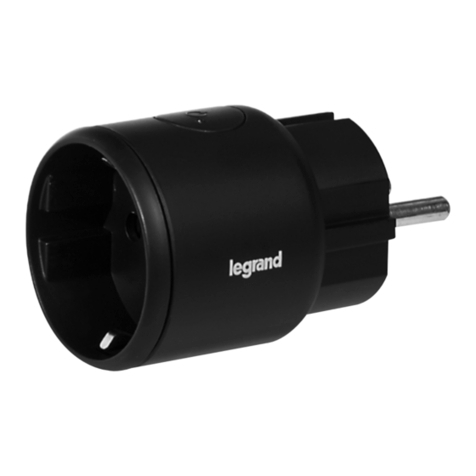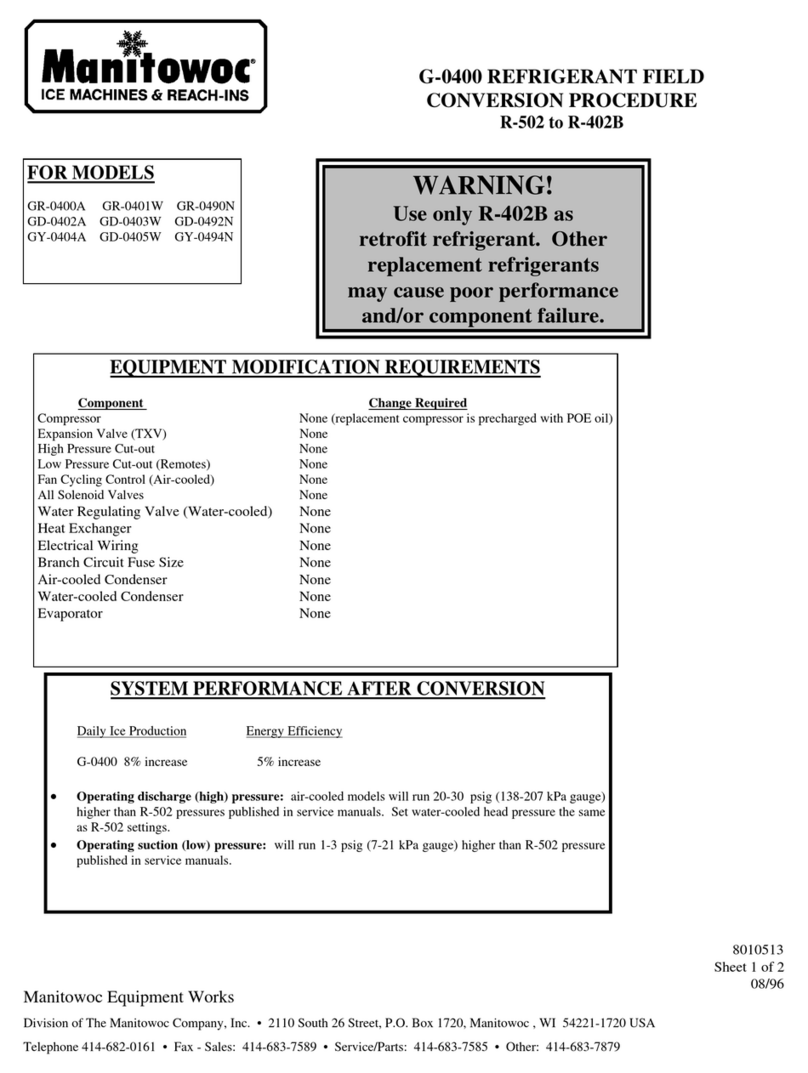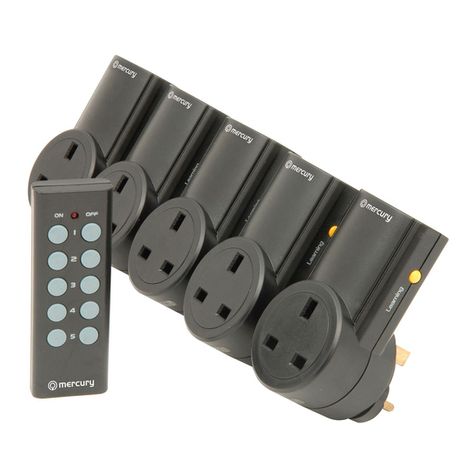BossPac WASP User manual

BossPac WASP™
(Wireless Acceleration Sensor Puck)
For use with the
BossPac NEST™
• Acceleration, Velocity, & Temperature
• CSA Class I Div 2*
• ATEX Zone 0 Pending
Bay 8, 1450 - 28 Street NE, Calgary, Alberta, Canada T2A 7W6
Phone: +1 (403) 216-1226 Toll Free: +1 (866) 616-1226 Fax: +1 (403) 216-5557
www.bosspac.com

www.bosspac.com
2
WARNING
READ THIS MANUAL BEFORE OPERATING THIS DEVICE.
WARNING
TO PREVENT EQUIPMENT FAILURE AND/OR DAMAGE
AND/OR PERSONAL INJURY, REGULAR CALIBRATION
AND INSPECTION OF THIS DEVICE IS REQUIRED.
WARNING - EXPLOSION HAZARD
SUBSTITUTION OF COMPONENTS MAY IMPAIR
SUITABILITY FOR CLASS 1 DIVISION 2.
WARNING - EXPLOSION HAZARD
DO NOT REPLACE OR REMOVE BATTERIES UNLESS AREA IS
KNOWN TO BE NON-HAZARDOUS.
WARNING – STRONG MAGNET
Strong magnetic field can cause personal injury or death to
individuals with medical implants or other magnetic field sensitive
medical conditions.
Keep tools and other metal objects away.

www.bosspac.com
3
Introduction
The BossPac WASP is a wireless acceleration, velocity and temperature sensing
device. It features a 3 axis accelerometer, with a frequency range of 2 to 400 hertz
and an amplitude of +/- 16 G.
With a mounting point temperature range of -40C to +185C the WASP can be mounted
directly to valve caps allowing the measurement of acceleration, velocity and
temperature.
With the ability to monitor up to 64 WASP’s, the BossPac NEST (Network Electronic
Sensor Terminal) can be used to monitor up to 64 locations on equipment from just
one controller.
Installing the Battery
Each sensor puck is shipped with a separate battery module. The battery module
contains a non-removable long lasting lithium battery.
To turn on and activate each sensor puck you must carefully attach the battery board
to the sensor unit. Plug the pins on the battery board into the corresponding connectors
on the sensor puck. See photo on the next page.
Once the pins make contact a LED on the underside of the battery module will flash to
indicate power on. During this time, the WASP device performs a power-on self test
(POST). If all is well, the LED will flash quickly for a couple of seconds and then turn off.
Should the POST fail, the device goes into a non-operational state and flashes the LED
in discernable patterns to help diagnose the source of the problem. See Appendix A of
this manual for information on troubleshooting the LED flash codes.
NOTE: Do not remove the screws from bottom of the sensor puck.
Doing so will void the product’s warranty.
WARNING - EXPLOSION HAZARD
DO NOT REPLACE OR REMOVE THE BATTERY UNLESS AREA IS
KNOWN TO BE NON-HAZARDOUS.

www.bosspac.com
4
Installation
When setting up measurement points on equipment it is important to take into account
bearings, bearing support housing, and other structural parts that will respond to the
vibrational forces the equipment will be subjected to.
To best monitor vibrational behaviour at each measuring point, it is necessary to take
measurements in 3 perpendicular directions (X,Y,Z axis). Figures 1 to 3 below show
suggested measurement points for 3 types of machinery. The WASPTM measures 3-
axis by default.
Detailed recommendations for specific machine types are provided in ISO document
10816.
The sensor pucks can be attached to the desired equipment by either magnet, epoxy
or stud mount. When using the magnet mount place a small dollop of thermal paste on
the center of the magnet prior to mounting.
The WASPTM has an effective range of up to 60 meters from the antenna.
Note: To ensure effective wireless transmission between the sensor pucks
and the antenna it is recommended that there is a direct line of sight between
the units.

www.bosspac.com
5

www.bosspac.com
6
Thermal Calibration of WASPs
To ensure the greatest accuracy of the monitored variables, it is advised to do thermal
calibration of each WASP unit. The process of thermal calibration is as follows:
1. Ensure the machinery for which the WASP is to be attached is at operating
temperature.
2. Place the WASP(s) units at their desired mounting points using thermal paste.
Allow 15 minutes for the temperature to stabilize.
3. Using a reference temperature source (ie. IR Temperature Gun1), record the
temperature value at the valve cap at the mounting point of the WASP unit.
4. At the NEST, adjust the display temperature to match the value of the thermometer
gun using the temperature calibration function. (See the section on temperature
calibration in the Setting Temperature Warning, Critical Error, and Offset Limits section
in the NEST User Manual).
Notes:1. IR Temperature Guns commonly have accuracy ratings of +/- 2% and the
readings can be affected by the distance and angle that the measurements are
taken from.

www.bosspac.com
7
Appendix A
Troubleshooting LED Flash Codes
The following table contains a brief description of all flash codes reported by the device:
FLASH CODE DESCRIPTION ACTION
1 Flash:
Accelerometer Failure Device cannot communicate with the
accelerometer Not user serviceable.
Replace sensor.
2 Flashes:
Battery Failure Device battery is either too low or too
high. Replace Battery as per the
Battery Installation section
of this manual.
3 Flashes:
Temperature Sensor Failure Temperature Sensor readings are
outside of the start-up temperature
window, from -40°C to 100°C
Ensure that the mounting
point temperature is within
the allowable temperature
range and replace the
battery as per the Battery
Installation section of this
manual. If error persists
the sensor may need to be
replaced.
4 Flashes:
Radio Failure Device could not initialize the radio. Not user serviceably.
Replace sensor.
5 Flashes:
Regulator Failure The onboard regulator is not able to
maintain the required voltage for
correct operation.
Replace Battery as per the
Battery Installation section
of this manual, if error
persists the sensor may be
faulty and need
replacement.
Support
For support contact BossPac Engineering & Technology toll free at
866-616-1226.

www.bosspac.com
8
FCC & IC Statements
FCC Class B Part 15
This device complies with part 15 of the FCC Rules. Operation is subject to the
following two conditions:
• This device may not cause harmful interference, and
• This device must accept any interference received, including interference that may
cause undesired operation.
Changes or modifications not expressly approved by BossPacEngineering Technology
Inc. may void the user’s authority to operate the equipment.
IC RSS 210
This device complies with Industry Canada licence-exempt RSS standard(s). Operation
is subject to the following two conditions: (1) this device may not cause interference,
and (2) this device must accept any interference, including interference that may cause
undesired operation of the device.
Le présent appareil est conforme aux CNR d'Industrie Canada applicables aux
appareils radio exempts de licence. L'exploitation est autorisée aux deux conditions
suivantes : (1) l'appareil ne doit pas produire de brouillage, et (2) l'utilisateur de
l'appareil doit accepter tout brouillage radioélectrique subi, même si le brouillage est
susceptible d'en compromettre le fonctionnement.
FCC/IC RF Exposure Statement
This equipment complies with FCC radiation exposure limits set forth for an uncontrolled
environment.
Cet équipement est conforme à l'exposition aux radiations de FCC et d'Industrie
Canada établies pour un environnement non contrôlé.
Bay 8, 1450 - 28 Street NE, Calgary, Alberta, Canada T2A 7W6
Phone: +1 (403) 216-1226 Toll Free: +1 (866) 616-1226 Fax: +1 (403) 216-5557
Table of contents
Other BossPac Accessories manuals
Popular Accessories manuals by other brands

Fisher Scientific
Fisher Scientific Isotemp 60L Incbtr Grvity 120V user manual
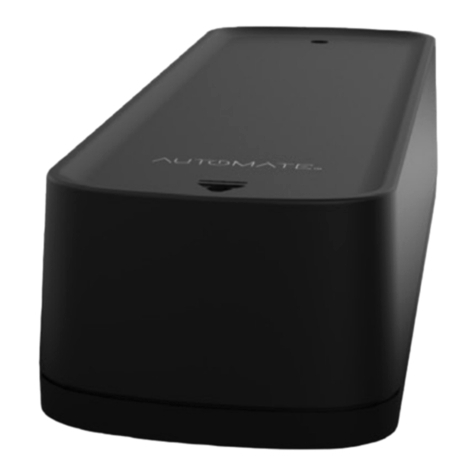
rollease acmeda
rollease acmeda AUTOMATE Programming instructions

Browan
Browan TBHV110-915 Reference manual

MOB
MOB MO6815 user manual
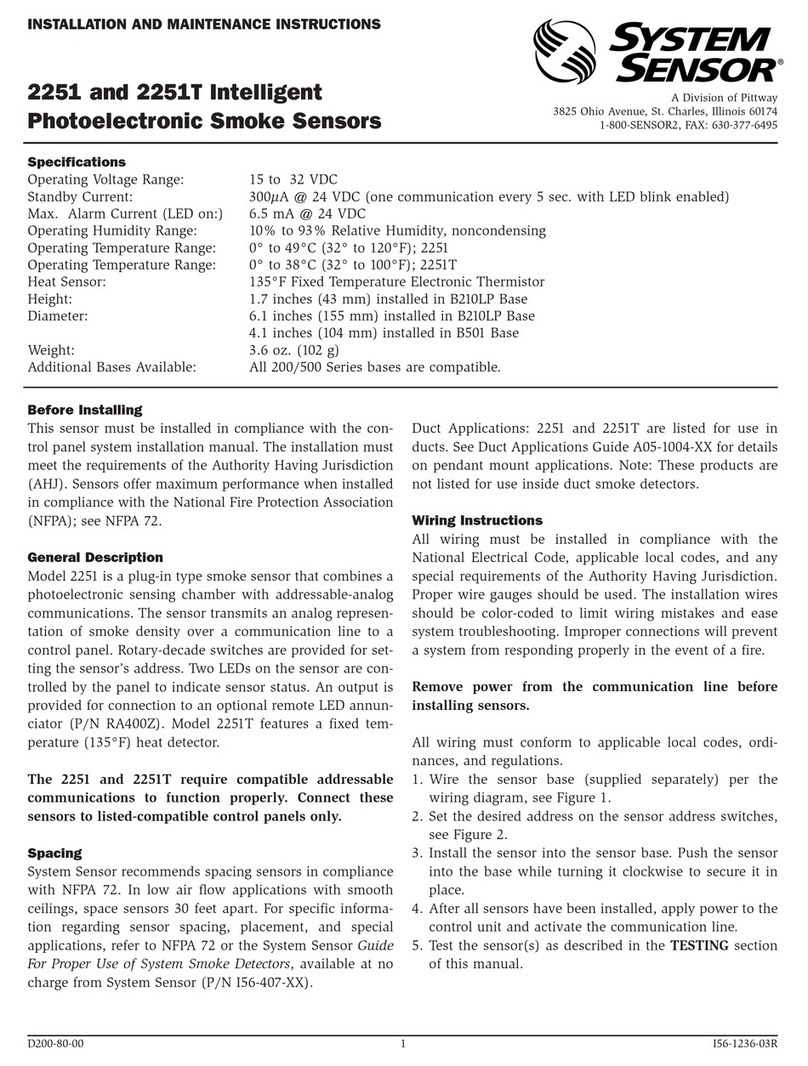
Pittway
Pittway SYSTEM SENSOR 2251 Installation and maintenance instructions
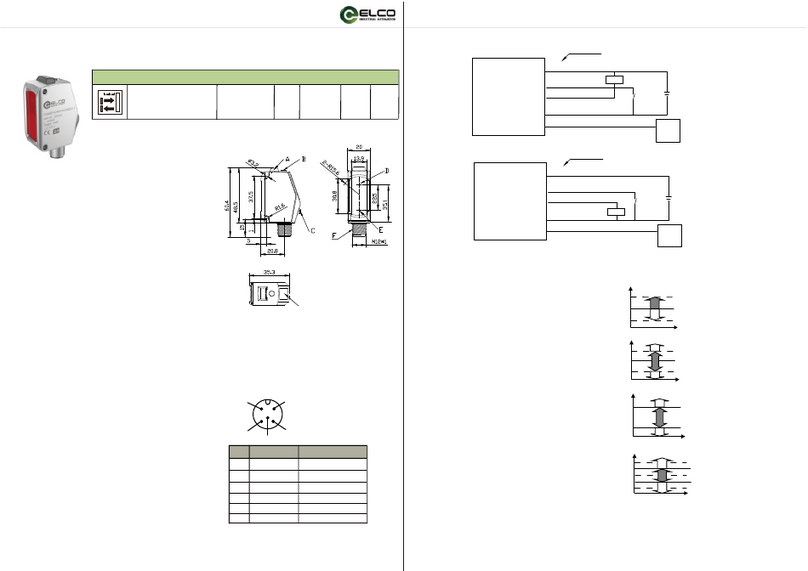
elco
elco OSM40 instruction manual
